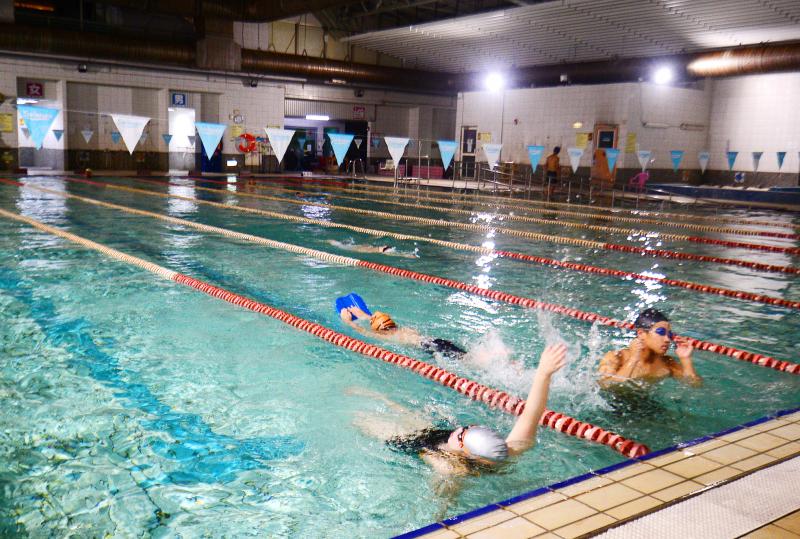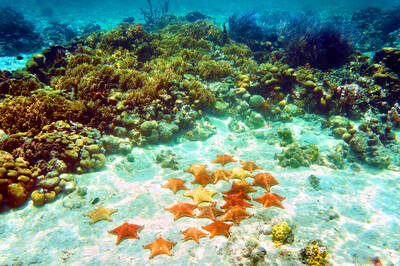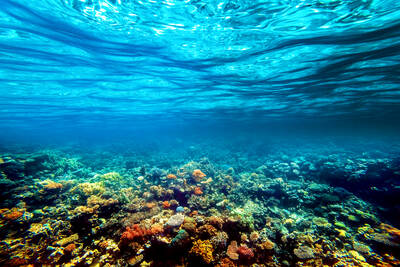As swimming pools reopen throughout the nation, the public is gradually returning to the water. However, there are still a great number of people concerned that if they swim without a mask, they might be at risk of catching COVID-19. One doctor has pointed out that there is no research that proves humans can contract the disease either from natural water sources or from drinking water.
According to a Facebook post by Landseed International Clinic Department of Sports Medicine and Physical Rehabilitation clinician Wu Yi-cheng, SARS-CoV-2 — the virus that causes COVID-19 — is only able to survive inside living organisms and therefore cannot be transferred through swimming pool water. Wu adds that the virus becomes more unstable on making contact with water and its activity rapidly slows down. The virus is also sensitive to disinfected swimming pool water such as chlorinated water, making it unable to transmit through the water. In this respect, SARS-CoV-2 differs from the Norovirus and intestinal viruses, which are able to survive in water for several days and will even partly remain in water that has been disinfected, according to Wu.
Research shows that SARS-CoV-2 is less resistant to chlorine than bacteria is, so the current method of sterilizing swimming pool water to reduce levels of bacteria and non-enveloped viruses is effective against viruses with membranes such as the novel coronavirus. Furthermore, the virus’ activity slows down at a faster rate in filtered water since there are fewer suspended particles for it to adhere to and provide it with a degree of protection. Reducing the amount of particulate matter in a body of water therefore reduces the potential for SARS-CoV-2 to spread. Additionally, there is currently little scientific evidence that shows the novel coronavirus is able to survive in water, nor is there any evidence that humans have become infected by the virus through a water source or through drinking contaminated water. Rather, the evidence shows that it spreads by means of aerosol transmission within confined spaces.

Photo: Wang Yi-sung, Liberty Times 照片:自由時報記者王藝菘
(Liberty Times, translated by Edward Jones)
隨著游泳池的開放,許多民眾也逐漸願意前往游泳,但仍有許多民眾擔心在游泳時,會因為沒戴口罩而感染武漢肺炎(新型冠狀病毒病,COVID-19);對此,有醫師指出,沒有研究證明人類透過水源或受污染的飲用水感染。
聯新國際診所運動醫學科、復健專科醫師吳易澄在臉書發文指出,新冠病毒能夠在人體生存的狀況並無法轉移到一些泳池用水中,新冠病毒在水中環境較不穩定,在水中的活性降低速度較快,另外對於消毒過後的水中物質(例如氯)相對敏感,無法在泳池中傳播,與能夠在水中存活數天,消毒仍會部分殘存的諾羅病毒、腸病毒不同。

照片:自由時報記者陳冠備 Photo: Chen Kuan-pei, Liberty Times
根據研究,新冠病毒對氯的抵抗力低於細菌,所以目前對於泳池的消毒做法,有效減少細菌跟無套膜病毒數量,對於有套膜的新冠病毒也有效,而過濾後的水中,新冠病毒的活性減低較快,因為水中的懸浮物質提供吸附病毒部分保護作用,減少懸浮物質,也有效減少新冠病毒傳播的可能,目前水域中存在新冠病毒的研究證據少,而且沒有研究證明人類透過水源或受污染的飲用水感染,相對於密閉空間的飛沫感染。
(自由時報)

For many people in Taiwan, childhood memories of rural life include pig pens standing beside family homes. Leftover rice, vegetable scraps and soup from daily meals were poured into buckets and fed to pigs. This practice of feeding pigs with household food waste was once a common way of life, both an economic choice and an expression of agricultural society’s deep respect for conserving resources. From a practical standpoint, pigs are omnivorous animals capable of efficiently digesting food scraps that humans can no longer eat. For rural households, food waste cost almost nothing, yet it could be converted into pork, a

Tango unfolds in a dimly lit room, where a haunting melody ushers two dancers into a close embrace. Here, music and movement merge into a silent yet passionate conversation, expressing longing, memory and shared purpose. What makes tango truly magical is the deep interaction and spontaneous improvisation between partners. Tango began in the late 19th century in Buenos Aires, Argentina’s bustling capital. Born in the poor working-class neighborhoods and busy port areas, this dance emerged from a melting pot of cultures. European immigrants, African slaves and local residents all contributed to its unique character. From these rich influences, tango

Sea star wasting disease (SSWD) is a strange and serious illness affecting sea stars, or starfish. This disease causes sea stars to develop painful lesions, lose their arms, and eventually turn into a gooey, melted mess. Since it was first observed in 2013, millions of sea stars along the Pacific coast of North America have died from this __1__. Although viruses were once considered a possible cause, researchers now believe that environmental stressors and microorganisms are primarily __2__ for sea star wasting disease. One of the main environmental triggers appears to be warmer ocean water. When the water heats

Continued from yesterday(延續自昨日) https://www.taipeitimes.com/News/lang The loss of sea stars significantly impacts the ocean ecosystem. Sea stars are important __6__ that help control populations of mussels and sea urchins. Among them, the sunflower star is one of the largest and fastest sea stars and is adept at preying on sea urchins. Without sea stars, sea urchins can __7__ in numbers and devastate kelp forests. These forests are essential __8__ for many marine animals and also help capture carbon from the atmosphere, which is vital in the fight against climate change. The mystery behind SSWD is still __9__, but it is clear that